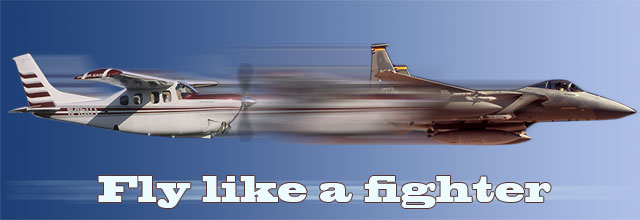
As a young F-15 wingman it wasn’t always easy to keep up with the navigation while following my lead. Just flying formation often kept me busy to the exclusion of other tasks. I made sure to follow the new fighter pilot rules: Don’t hit lead; don’t hit the ground; and don’t run out of gas.
 On my first deployment to Korea, I was No. 4 in a four-ship for a training mission over the Yellow Sea on a VFR day – sunny skies but with typical Korean haze and visibilities of 3 to 4 miles near the ground. While cruising to the area, I tried to soak in some of the topography and noticed a main river flowing west into the sea. I figured that would be a good reference point for situational awareness.
On my first deployment to Korea, I was No. 4 in a four-ship for a training mission over the Yellow Sea on a VFR day – sunny skies but with typical Korean haze and visibilities of 3 to 4 miles near the ground. While cruising to the area, I tried to soak in some of the topography and noticed a main river flowing west into the sea. I figured that would be a good reference point for situational awareness.
In the middle of our first engagement, I split away from the others in full afterburner to avoid a missile shot. I checked six, then checked my gas, and was panicked to see my fuel was below our bingo fuel established for the return home. I either had a fuel leak or a gauge malfunction. I knew the drill – plan for the worst and hope for the best.
I was already 3 miles away from the group, doing about 550 knots, and was generally heading back toward land with them behind me. In case it was a leak, I didn’t want to eject over the water so elected not to turn back toward them for my flight lead to rejoin on me. I headed for home, making a radio call to let them know what was up.
My brain then went back and forth on the fuel situation. With a fuel leak, the procedure was to use military power to go fast and burn whatever fuel you could before it all leaked out. With a low fuel situation, the procedure was to fly a maximum range power setting to get as far as you could before you ran out of gas. Both situations called for a climb.
While managing the throttles, I also got my checklist out to double check my thinking, and it didn’t give me any more help. Eventually I hit the coastline and saw a river heading inland, which is where I made a slight turn to follow it. I then contacted the supervisor of flying in the tower to let him know I was an early return and not sure of my fuel state. By then the fuel gauges had frozen. I was VFR and had tower frequency in my radio pending my call to them.
But when I figured I should be getting close to home, I wasn’t. I was following the wrong river. I had been so busy analyzing the situation and talking to others that I hadn’t even used my onboard avionics to point me toward home or contacted approach control to ask for a vector. Rookie mistake. The “aviate, navigate, communicate” mantra exists for a reason.
It turns out I had a gauge malfunction, which I was able to figure out when on final approach and noticed a higher approach speed for an on-speed angle of attack reading. Every mission after that, I worked hard to keep my navigation equipment updated with our route of flight no matter what position I was flying. To this day, I always write down the ATIS/CTAF/ATC frequencies for my departure and arrival airports on my lineup card for quick reference. I also keep my VOR tuned and active even while navigating via GPS and monitoring with my iPad. Most importantly, I learned to put my pride aside and ask for help when I need it.
Larry Brown of Colorado Springs, Colorado, is a retired Air Force F-15 pilot who is using the lessons he learned as a fighter pilot as a GA pilot in his Cessna P210. Brown, who has 2,900 hours total time during his 35 years of flying, also was an instructor pilot and flight examiner in the Air Force T-38 and instructor pilot in the T-52, the military’s version of GA’s Diamond DA40. See previous installments of “Fly like a fighter.”



